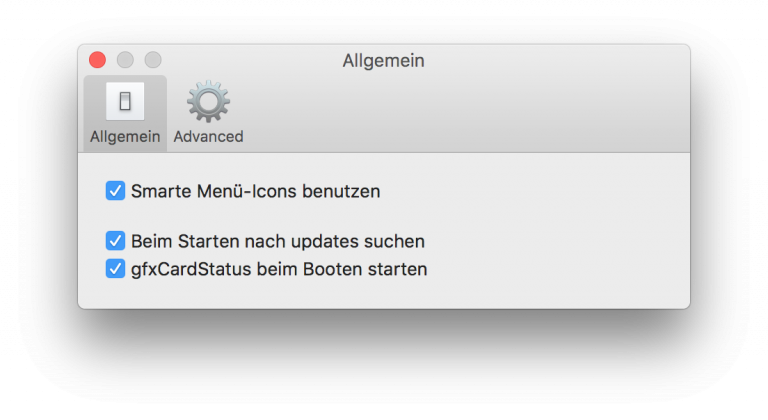

- #Gfxcardstatus os x for mac
- #Gfxcardstatus os x drivers
- #Gfxcardstatus os x driver
- #Gfxcardstatus os x pro
- #Gfxcardstatus os x code
Support host page-locked memory mapping: Yesĭevice supports Unified Addressing (UVA): Noĭevice PCI Bus ID / PCI location ID: 2 / 0ĭeviceQuery, CUDA Driver = CUDART, CUDA Driver Version = 4.0, CUDA Runtime Version = 4. Maximum sizes of each dimension of a grid: 65535 x 65535 x 1Ĭoncurrent copy and execution: No with 0 copy engine(s) Maximum sizes of each dimension of a block: 512 x 512 x 64 Total number of registers available per block: 8192 This way, you get to see if the Discrete Only mode is turned on and taking up resources without a good reason. Just navigate to the status bar menu and open the Dependencies lists. Total amount of shared memory per block: 16384 bytes gfxCardStatus can also help you distinguish the applications that activate the more power hungry graphics card. Total amount of constant memory: 65536 bytes ( 2) Multiprocessors x ( 8) CUDA Cores/MP: 16 CUDA Cores Total amount of global memory: 254 MBytes (265945088 bytes) This is the device querying result CUDA Device Query (Runtime API) version (CUDART static linking)ĬUDA Driver Version / Runtime Version 4.0 / 4.0ĬUDA Capability Major/Minor version number: 1.1 How can I kick the GPU (or CUDA) back into sanity ? I also tried to unload and reload the driver with a procedure I assume to be correct (may not be) kextunload -b īut still it does not work. I don't want to reboot every time it happens. I tried many solutions from the Nvidia forum, but it didn't work.
#Gfxcardstatus os x drivers
#Gfxcardstatus os x code
The code runs successfully if I restart the computer, but this is far from ideal. Con.Quite often, I get the CUDA library to completely fail and return with an error 46 ("all CUDA-capable devices are busy or unavailable") even for simple calls like cudaMalloc. Couch Potato, Sick Beard, SABnzbd tips & tricks.iTools - Copy video to iOS device without iTunes.Raspberry PI Operating System on SD-Card.
#Gfxcardstatus os x for mac
HighSpeed file sharing between two Macs gfxCardStatus for Mac Gives You Control Over Switchable Graphics Mac: If you have a newer Mac with both integrated and discrete graphics on the board, it can be Similarly, youll be able to make.Please note that clicking on Amazon links may result in a small commission for us. Qzf4qwap44z88jkdassythjcnm54upacmvmvnzgddg Use PayPal to give me a cup of coffee (select: $5, $10, $20, or custom amount)ġ6Ja1xaaFxVE4FkRfkH9fP2nuyPA1Hk7kR Donate in BitCoin Cash (BCH).


#Gfxcardstatus os x pro
Apple equips most of their Unibody MacBook Pro models with 2 video chipsets.


 0 kommentar(er)
0 kommentar(er)
